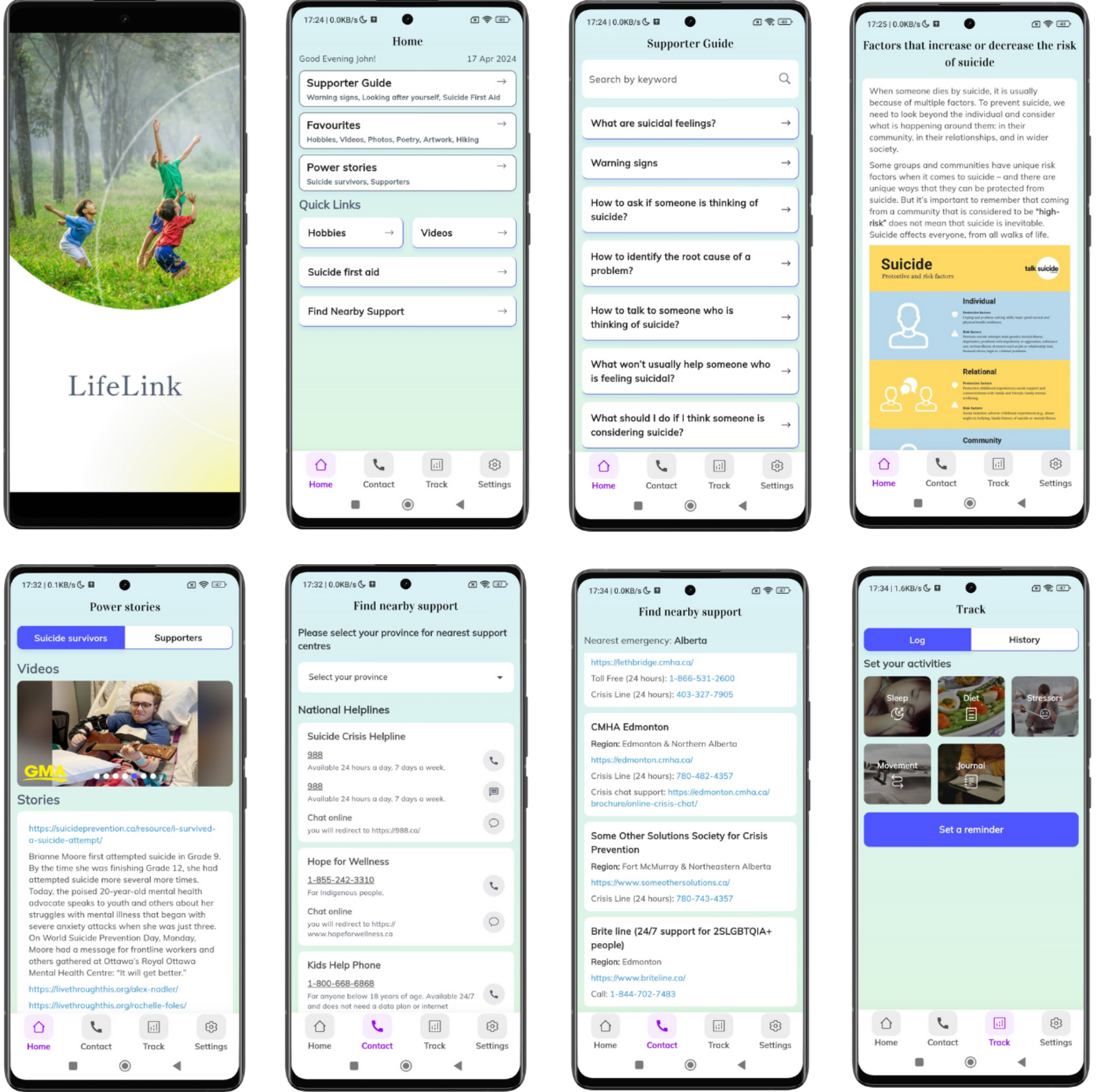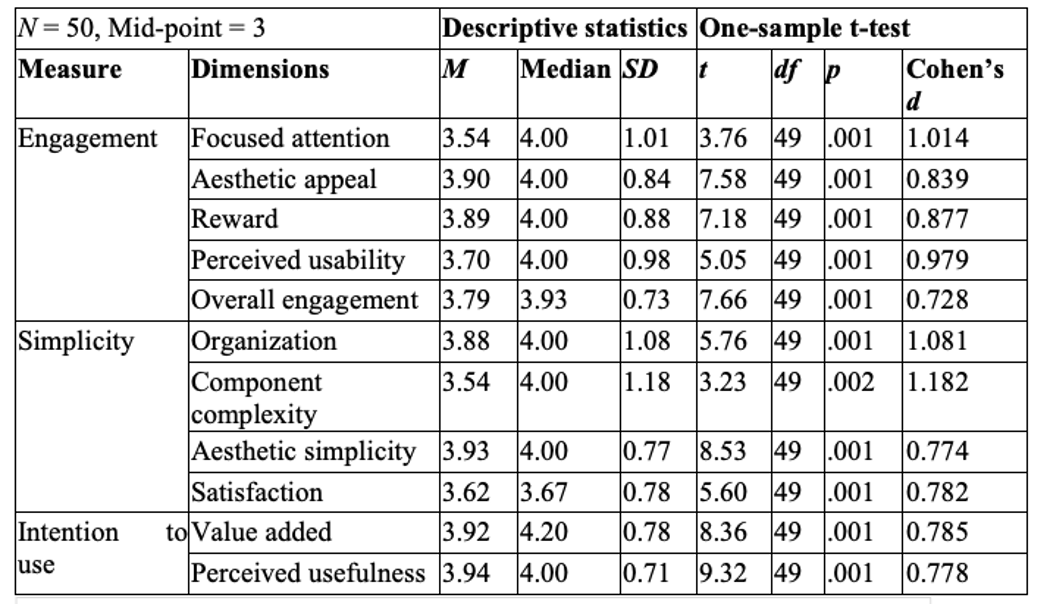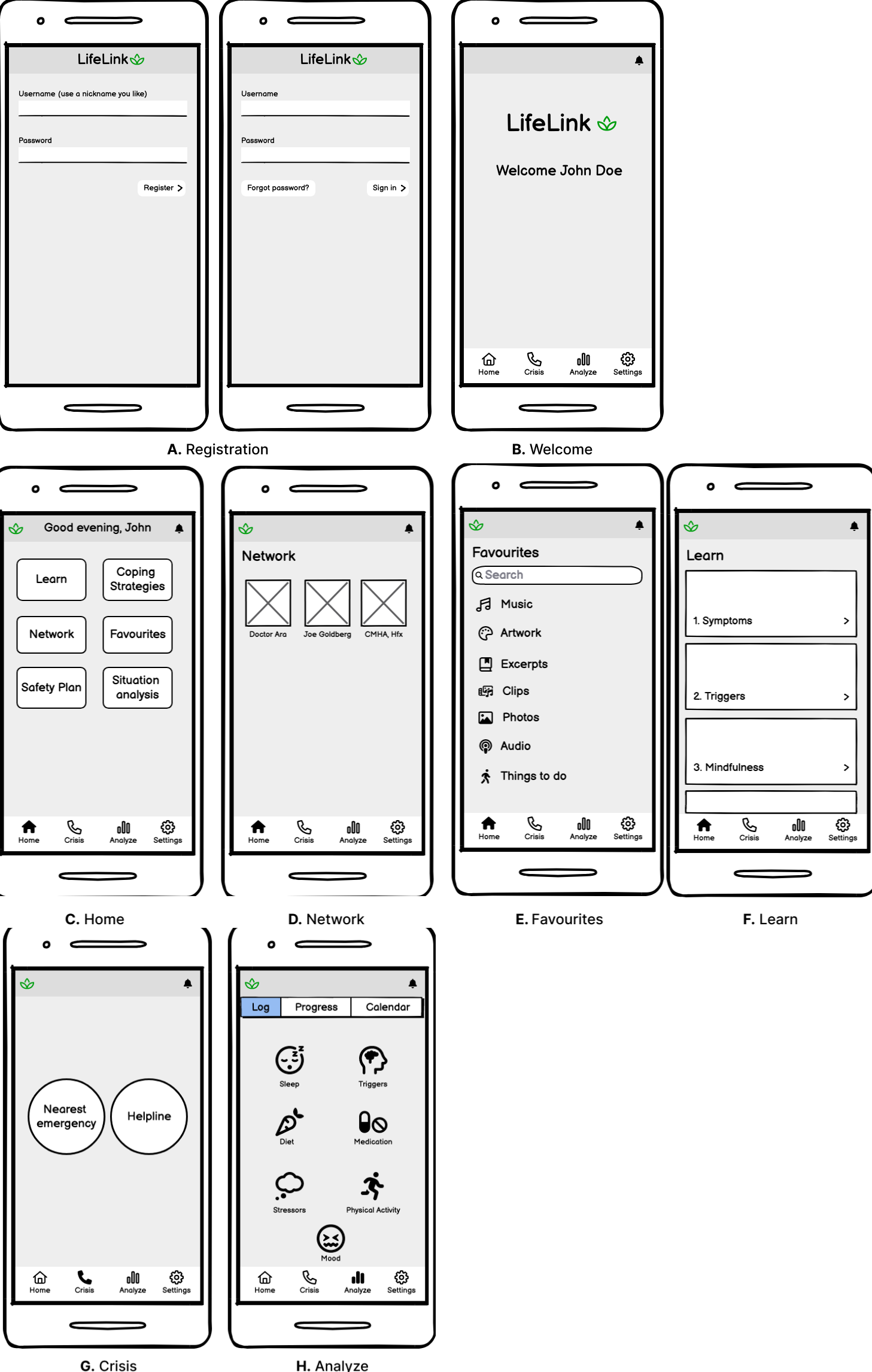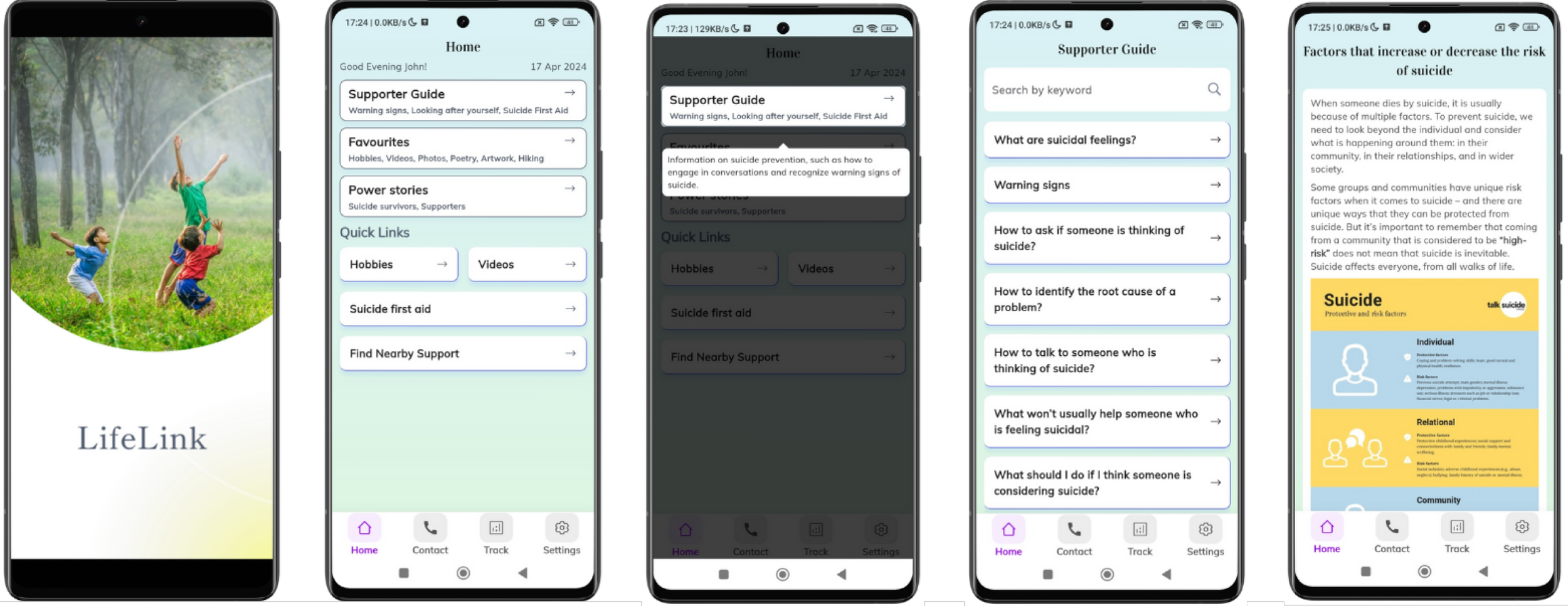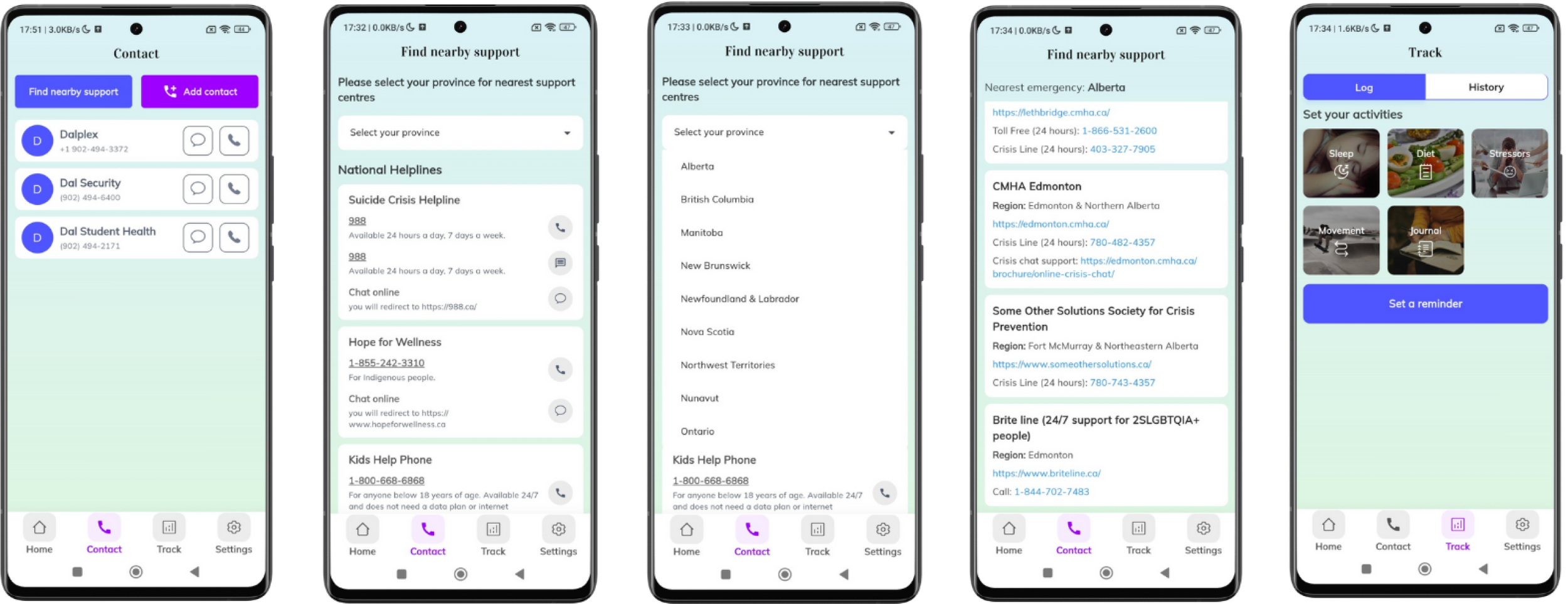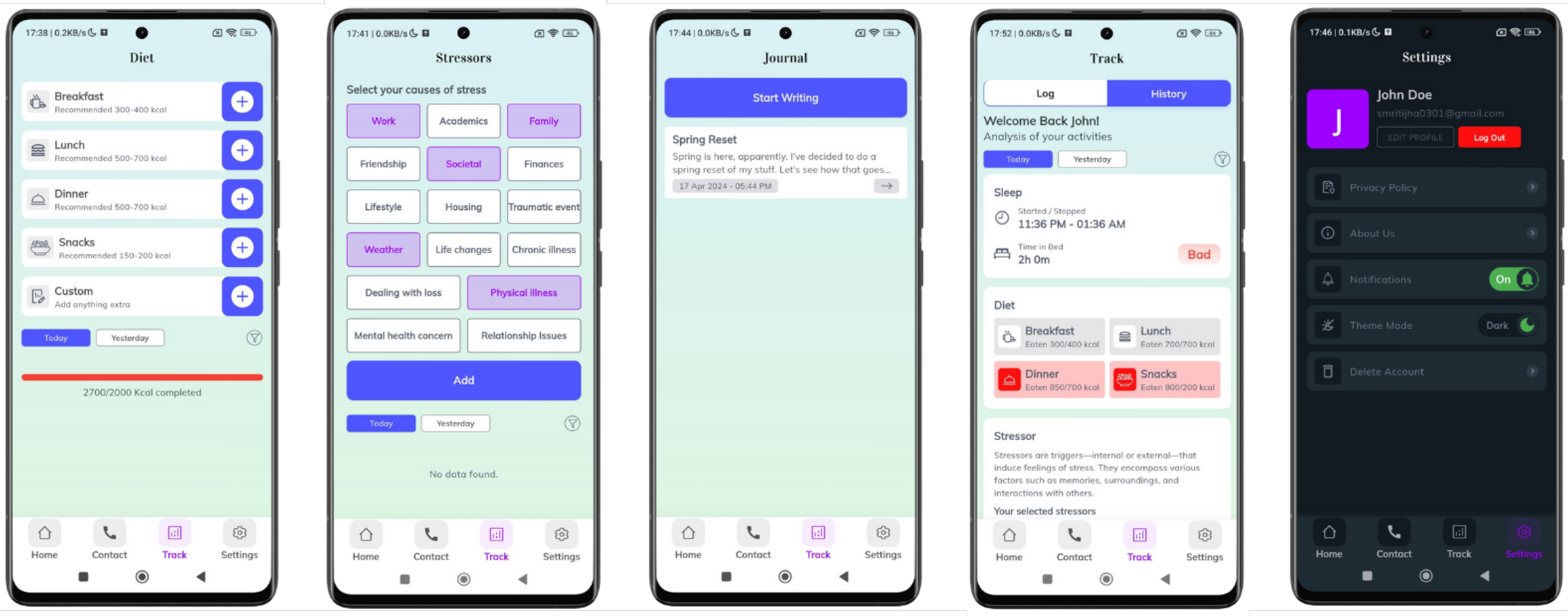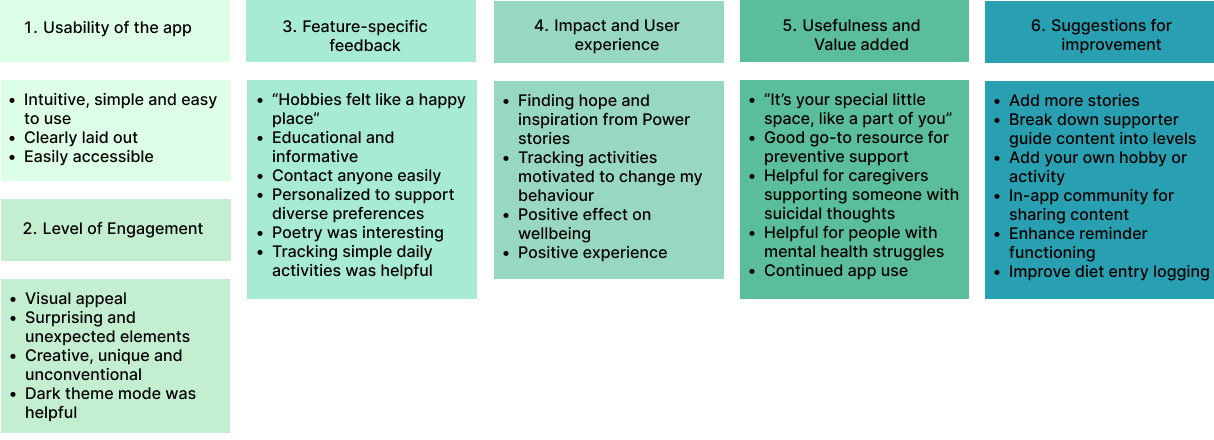LifeLink
A mental health support app for caregivers of individuals at risk of suicide
🎖️ Awarded the Graduate Research Scholarship by Dalhousie University’s Faculty of Computer Science (September 2023)
Overview
Problem
Caregivers supporting individuals experiencing suicidal thoughts face significant emotional and practical challenges (such as personal struggles with mental health and limited access to timely resources). Existing support systems are fragmented and not tailored to caregivers’ specific needs, leaving them feeling isolated and overwhelmed.
Constraints
Budget constraints for participant recruitment and compensation; time pressure; limited access to specific users (niche caregiver community); ethical considerations to avoid harm or discomfort; designing for caregivers in time-sensitive crisis situations.
My Role
UX Researcher, Product Designer.
Led research, analysis, and user testing efforts to uncover caregiver needs and pain points. Contributed to product design and development to deliver an actionable, user-centered solution for supporting caregivers of individuals at risk of suicide.
UX Process
The LifeLink app was developed using a user-centered design process, consisting of 3 distinct phases: Research, Ideation & Design, and Evaluation.
Problem
Caregivers supporting individuals at risk of suicide face significant challenges:
Emotional and psychological stress
Limited access to specialized resources
Lack of integrated tools for effective crisis management
Digital solutions tailored to caregivers’ specific needs are scarce, highlighting a critical gap in mental health technology. LifeLink addresses this gap by offering an evidence-based mobile solution equipped with tools for immediate support, resource management, and emotional resilience.
Evaluative and Strategic Research
Research Objectives
Understand caregivers' unique needs and pain points in supporting individuals at risk of suicide
Design LifeLink, a targeted digital solution to improve caregiver support
Evaluate whether the LifeLink app aligns with users' current behaviors and expectations.
Research Questions
Overarching question: How can we design a mobile app to assist caregivers of individuals experiencing suicidal thoughts?
RQ1. What are the limitations of existing suicide prevention mobile apps?
RQ2. What are caregivers' needs and challenges in supporting individuals experiencing suicidal thoughts?
RQ3. What persuasive design strategies can effectively support caregivers?
RQ4. How usable, engaging, and impactful is the LifeLink app?
RQ5. Does LifeLink create a positive user experience for caregivers?
Methodology & Procedure
Research
Objective: Identify gaps in current suicide-prevention apps and key factors influencing suicidality to inform the design of better mobile solutions.
Activities:
Literature review of key risk factors for suicidality.
Reviewed existing mobile apps for suicide prevention.
Partnered with community organizations.
Challenge: Establishing project partnerships; the scope of the project was ambiguous— defined it by reviewing existing apps and the field, and conducting brainstorming workshops in the next phase.
Outcome: Gained insights into functionality gaps in current tools.
Ideation
Objective: Conduct research on the problem and users
Activities:
Created a mind map to define scope, identify risks and constraints, brainstorm potential ideas and conceptualize research plan.
Conducted stakeholder meetings to align on a shared vision and gain feedback on current research plan.
Challenge:
How do we anticipate project and community-related risks in a niche area like suicide? → conducted brainstorming workshops with subject matter experts (psychiatry researchers), clinicians, wellness centre leaders, community leaders (working in mental health and suicide prevention space in NS and BC). Decision: design the app for caregivers instead of individuals experiencing suicidal thoughts.
Recruitment can be difficult, as people with lived experiences may not publicly identify themselves due to the stigma associated with suicide → partnered with the local community organization ‘Roots of Hope Nova Scotia’ which works with community members dealing with suicidality through community events and has access to a Canadian network of suicide prevention organizations; funded by the Mental Health Commission of Canada.
Constraint: Time-bound project with logistical and funding constraints in clinician integration → Decision: standalone app instead of one integrated with clinicians. Target population: Caregivers instead of mentally diagnosed individual experiencing suicidal thoughts.
Outcome: Finalized research plan
UX research journey map for the LifeLink project
Stakeholder workshops with mental health experts and community leaders informing research strategy
Mind map documenting research framework and study design decisions
Descriptive statistics and results of one-sample t-test for engagement, simplicity and intention to use LifeLink
Design
Goal: Develop a low-fidelity prototype addressing current gaps in suicide prevention apps:
potential to leverage persuasive design principles in app design
lack of evidence-based sources
low user engagement
Method: Created a prototype/wireframe building on gaps and using selected well-designed apps for inspiration. Stakeholder presentation with MHCC
Tools Used: Balsamiq
Concept testing
Goals:
Understand caregiver needs and pain points
Identify must-have tools and features
Validate early concepts through wireframe feedback
Method:
Mixed-methods: Surveys (n=45) + interviews (n=14)
Used wireframe testing for concept validation
Recruited caregivers (including partners, families, friends, teachers, social workers) living in Canada, who are or had supported another individual experiencing suicidal thoughts.
Key Findings:
Caregivers need a balance between practical functionality and emotional support
High-stress context requires intuitive design
Strong interest in peer experiences (connecting with folks in similar situations)
Users want more engaging features
Challenges & Solutions:
Time constraints → Conducted surveys (quicker)
Tech literacy barriers in different user groups → Used simple wireframes for testing vs complex prototype
Emotional topics → Developed protocol for sensitive conversations
Impact:
Generated 8 design recommendations to refine app design
Identified Power Stories as key feature
Informed specific design principles like simplified navigation for stressed users, clear information hierarchy and one-tap access to crisis resources
Final Design
Objectives:
Translate user study insights into high-fidelity prototype
Address core caregiver needs identified in research
Process:
Created sitemap to establish information architecture
Designed high-fidelity mockups in Figma
Validated navigation and flows through peer review
Key Design Decisions:
Quick access to crisis resources
Simplified information hierarchy
Power Stories feature for knowing about people in similar situations
Self-care tracking tools
Light/dark mode for accessibility
Example survey items in Opinio
Research-informed sitemap showcasing LifeLink's information architecture and user flows. Access enlarged version
App Development
Content Strategy:
Curated evidence-based content from healthcare websites
Developed content guidelines for sensitive topics
Challenge and Solution:
Decision: Android vs iOS app?
iOS has greater restrictions in app deployment – sensitive space.
Time and budget constraints — difficulty beta testing with iOS. Android has higher flexibility in APK distribution → easier testing
Core Features:
Track: Self-Care Tools
Sleep, diet, physical activity tracking
Journal entries
Stressors tracking
Progress visualization
Supporter Guide: Resource Hub
Educational modules
Keyword search for suicide prevention related information
Contact: Support Network
Crisis support contacts and quick access to trusted contacts
Province-based support resources
Favourites:
Store favourite content of the person caregiver is supporting, start conversations with them and engage in activities together.
Poetry, artwork, hiking, videos, photos
5. Power Stories:
Browse videos and stories of real-life survivors and caregivers
Pilot Testing
Pre-launch usability evaluation with 9 UX professionals to validate core functionality and identify final refinements.
Method:
Participants: 9 UX designers and researchers
Duration: 1 week testing period
Data Collection: Usability testing + structured feedback survey
Key Issues Identified:
Navigation Flow
Enhanced heading color contrast
Improved deletion flow for journal entries
Content Clarity
Refined About Us section copy
Enhanced infographic resolution in Supporter Guide
Visual Hierarchy
Adjusted information density
Improved readability
Into-the-Wild Evaluation Study
Methods:
Conducted a one-week study with 50 caregivers based in Canada.
Mixed-methods approach: Pre-study survey, 1-week app usage, post-study survey, and semi-structured interviews
Pre- and post-study surveys to assess changes in caregiver well-being, confidence, and app usage.
In-depth interviews to gather qualitative feedback on user experience and identify areas for improvement.
Challenges:
Navigating institutional review board (IRB) processes
Time and budget constraints in participant recruitment: Literature review informed 1-week study duration to balance data collection and participant retention without financial incentives
Ethical Considerations: Ensuring participant well-being when interacting with sensitive app content, by providing support mechanisms and managing emotional responses during the study.
Key Findings:
Improved Mental Wellbeing: One week of app usage resulted in a significant increase in caregivers’ wellbeing scores (from 24.20 to 26.86), with 80% of participants reporting increased confidence in their ability to support individuals experiencing suicidal thoughts.
High User Engagement: 80% of caregivers reported high engagement, with 56% engaging multiple times weekly. The app achieved an average engagement score of 4.6/5 on the User Engagement Scale, with 90% of participants recommending it to other caregivers. Achieved a System Usability Score of 72.08/100, ranking "above average" with 89% of users finding the app easy to navigate.
Effective Persuasive Design: All implemented persuasive strategies were rated significantly effective (p < 0.001), with Power Stories (M = 4.02/5) and Contact (M = 3.99/5) features rated most impactful. 92% of users reported the app positively influenced their caregiving approach.
Positive feedback received on emotional support tools
Qualitative insights gathered on user experience and areas for improvement
Impact:
Tangible improvements in user confidence and app adoption
Actionable insights to guide future app development and refinement
Descriptive statistics and normality test results of Mental Wellbeing (SWEMWBS) scale. (M = Mean, SD = Standard Deviation, W = test statistic, df = degrees of freedom, p = probability value)
Ranks table with mean ranks result from Wilcoxon-signed rank test
User feedback quotes on impact of LifeLink on confidence levels (above) and value-added (below)
Frequency distribution of user engagement ratings
Next Steps
Building upon the evaluation study’s outcomes, the following next steps are identified to enhance LifeLink’s impact and scalability:
Design Refinements:
Implementing the eight actionable design principles generated from user research to address feedback for improved user engagement and accessibility.
Enhancing features like Power Stories and Contact tools to better support diverse caregiver needs.
Extended Testing:
Conducting a longitudinal study to evaluate sustained impacts of LifeLink over months of use.
Exploring variations in app effectiveness across different caregiver demographics.
Stakeholder presentation:
Presenting findings to stakeholders and partners (such as clinicians) for further validation.
Caregivers’ mental wellbeing scores pre and post-study
Stakeholder feedback
Challenges and Learnings
Challenges:
Balancing emotional sensitivity with technical functionality.
Designing for stressed, time-constrained users.
Key Learnings:
Empathy-driven design leads to better adoption.
Continuous user feedback is critical for tools addressing mental health needs.
Outcome and Impact
Final Product: LifeLink successfully addresses caregiver needs through intuitive design and functionality.
Outcomes:
Improved Mental Wellbeing: One week of app usage resulted in a significant increase in caregivers’ wellbeing scores (from 24.20 to 26.86), with 80% of participants showing improved scores post-study.
High User Engagement: 80% of caregivers reported high engagement, with 56% engaging multiple times weekly. The app achieved an average engagement score of 4.6/5 on the User Engagement Scale, with 90% of participants recommending it to other caregivers. Achieved a System Usability Score of 72.08/100, ranking "above average" with 89% of users finding the app easy to navigate.
Effective Persuasive Design: All implemented persuasive strategies were rated significantly effective (p < 0.001), with Power Stories (M = 4.02/5) and Contact (M = 3.99/5) features rated most impactful. 92% of users reported the app positively influenced their caregiving approach.
Impact:
Targeted Solution: Developed the first suicide prevention Android app for Canadian caregivers, filling a critical gap in suicide prevention solutions by addressing their unique needs.
Novel Research Approach: Created a caregiver-centered design approach, involving caregivers directly in app design, revealing previously unexplored needs and challenges through two-phase user research with 95 participants.
Design Guidelines: Generated eight actionable design principles for designing mental health applications to support caregivers, contributing to the broader field of mental health technology.
Future Plans: Scaling the app to reach larger caregiver communities.
Reflection
Designing the LifeLink app to support caregivers of individuals experiencing suicidal thoughts has been a transformative experience that has deepened my understanding of UX research and user-centered design. This project has taught me several valuable lessons:
Empathy is Crucial: Working on a sensitive and high-impact area highlighted the importance of empathy in UX research. Understanding the emotional challenges and unique needs of caregivers was essential to create a truly supportive app. Actively listening to user stories helped me gain a deeper understanding of their experiences.
User Involvement is Key: Engaging caregivers throughout the design process was crucial to ensure the app met their needs effectively. This project reinforced the importance of involving users early and often, as they are the experts in their own experiences.
Balancing Functionality and Sensitivity: Designing for a sensitive topic like suicide prevention required striking a delicate balance between providing comprehensive support and maintaining a non-triggering, emotionally safe user experience. This taught me the importance of carefully considering the potential impact of each design decision and prioritizing user well-being throughout the research and design process.
Collaboration is Powerful: Collaborating with mental health experts, community organizations, and other stakeholders brought diverse perspectives and expertise to the project. This collaboration enriched the design process and grounded the app in best practices and real-world contexts. It taught me the power of interdisciplinary collaboration in creating meaningful and impactful solutions.
Behind the Scenes
Name Evolution: Evolved from 'RescYou' and 'LifeSave' to 'LifeLink' to emphasize connection and empowerment over rescue - a key insight from caregiver research.
Intentional Design Details: Sample artworks within the app feature Van Gogh, Virginia Woolf, and Avicii - influential artists lost to suicide - creating deeper resonance with users while preserving artistic heritage.
Design Inspiration: Combined UI patterns from leading mental health apps (Headspace, Calm) with design elements from Spotify and Waking Up to create an experience that balances utility with emotional support.
Additional Project Documentation
Publications
Smriti Jha, Gerry Chan, Seana Jewer, Vincent I O Agyapong, and Rita Orji (2025). “Bring them back to life”: LifeLink Application for Caregivers Dealing with Suicidality”. In 2025 CHI Conference on Human Factors in Computing Systems. Accepted January 2025.
Smriti Jha, Gerry Chan, Seana Jewer, Vincent I O Agyapong, and Rita Orji (2025). “Engaging Caregivers in the Design of LifeLink : A Persuasive Mobile Application for Suicide Prevention”. In International Journal of Human-Computer Interaction, January 2025. https://doi.org/10.1080/10447318.2025.2453608
Smriti Jha (2024). Design and Evaluation of LifeLink: A Persuasive Mobile Application for Caregivers Dealing with Suicidality. [Master's Thesis]. Dalhousie University. In DalSpace, October 2024. http://hdl.handle.net/10222/84647
Smriti Jha, Seana Jewer, Vincent I.O Agyapong, Rita Orji (2024). Can Your Smartphone Save A Life? A Systematic Review of Mobile-Based Interventions For Suicide Prevention. In International Journal of Human–Computer Interaction, March 2024. https://doi.org/10.1080/10447318.2024.2323274
Smriti Jha, Gerry Chan, Rita Orji (2023). Identification of Risk Factors for Suicide and Insights for Developing Suicide Prevention Technologies: A Systematic Review and Meta‐Analysis. In Human Behavior and Emerging Technologies, March 2023. https://doi.org/10.1155/2023/3923097
Online seminar talking about this research study: Video
Recruitment posters, Survey, Interview questions and credits
Thanks for reading! If you have any questions about the process for this study, feel free to contact me and I would be happy to go over in more detail!
User feedback themes and improvement suggestions from the qualitative analysis
My Contribution
Led the end-to-end UX research and design of LifeLink, the first suicide prevention app specifically for caregivers:
Targeted Solution: Developed a pioneering Android app for Canadian caregivers, filling a critical gap in suicide prevention solutions by addressing their unique needs.
Novel Research Approach: Created a caregiver-centered design approach, involving caregivers directly in app design, revealing previously unexplored needs and challenges through two-phase user research with 95 participants.
Design Guidelines: Generated eight actionable design principles for designing mental health applications to support caregivers, contributing to the broader field of mental health technology.
Outcomes
Improved Mental Wellbeing: One week of app usage resulted in a significant increase in caregivers’ wellbeing scores (from 24.20 to 26.86), with 80% of participants showing improved scores post-study.
High User Engagement: 80% of caregivers reported high engagement, with 56% engaging multiple times weekly. The app achieved an average engagement score of 4.6/5 on the User Engagement Scale, with 90% of participants recommending it to other caregivers. Achieved a System Usability Score of 72.08/100, ranking "above average" with 89% of users finding the app easy to navigate.
Effective Persuasive Design: All implemented persuasive strategies were rated significantly effective (p < 0.001), with Power Stories (M = 4.02/5) and Contact (M = 3.99/5) features rated most impactful. 92% of users reported the app positively influenced their caregiving approach.
Team
Led independently with guidance from Dr. Gerry Chan and Dr. Rita Orji.
Key collaborators: Seana Jewer (Roots of Hope Nova Scotia, Mental Health Commission of Canada), Dr. Vincent Agyapong (Dalhousie Psychiatry, IWK Health), and Dalhousie Student Health & Wellness Centre.
Relevant Tools
Figma, Miro, Balsamiq, Lucidchart, SPSS, Excel, Atlas.Ti, Python, Teams, Opinio
Link
